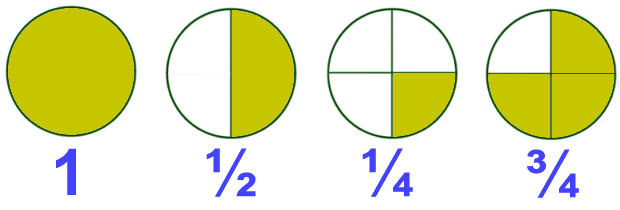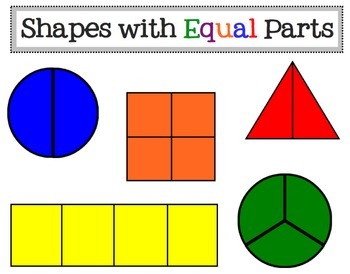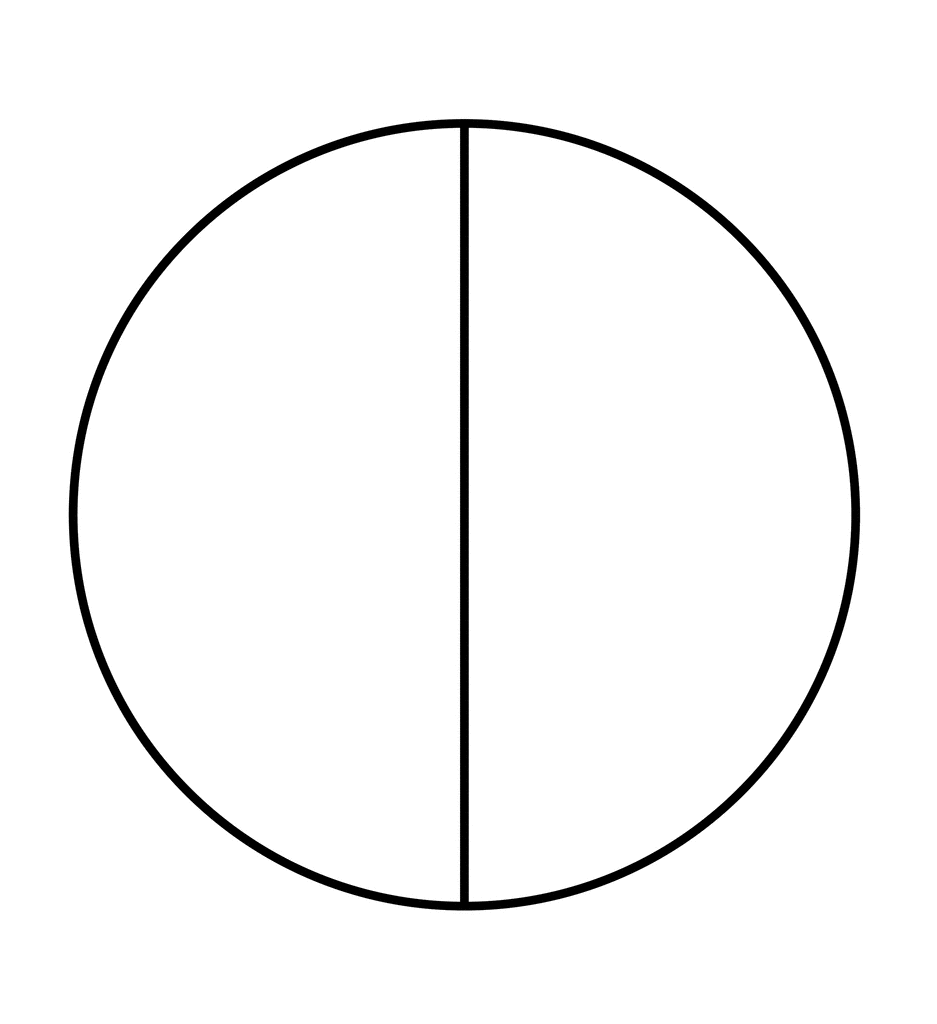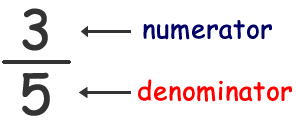Fractions
This week’s math is all about Fractions. Activities include recognizing Fractions, identifying their properties (halves, quarters, etc.), playing Pizza Fractions Bingo, writing Fractions,

Activity #9a: About Fractions
A fraction represents part of a whole. When something is broken up into a number of parts, the fraction shows how many of those parts you have.
Here are some examples of fractions. The first picture shows the whole and then the other pictures show fractions of that whole.

When writing a fraction there are two main parts: the numerator and the denominator. The numerator is how many parts you have. The denominator is how many parts the whole was divided into. Fractions are written with the numerator over the denominator and a line in between them.

There are different types of fraction and different ways of writing the same fraction. Sometimes fractions may look different and have different numbers, but they are equivalent or have the same value.
Watch the video.
__________________________________________________
Equal Parts of a Fraction
Here are different whole shapes. They have each been divided into equal parts. Equal parts means that each part of the whole is the exact same size.

Halves, Quarters, Thirds, and more.
When you divide a whole shape into 2 equal parts, you are dividing it into halves.

When you divide a whole shape into 3 equal parts, you are dividing it in thirds.

When you divide a whole shape into 4 equal parts, you are dividing it into quarters or fourths.

You can divide shapes into 5 equal parts (fifths), 6 equal parts (sixths), 7 equal parts (sevenths), 8 equal parts (eighths), 9 equal parts (ninths), 10 equal parts (tenths) and more.

__________________________________________________
Equal Parts & Dividing Parts Practice.
#1 Identify the shapes that have been divided into equal parts.
#2 Divide the shapes into equal parts.
#3 Identifying halves and quarters.
#4 Identifying halves, thirds and quarters.
#5 Identifying halves, thirds, quarters, sixths, and eighths.
**************************************************
Activity #9b: Pizza Fractions Bingo
Time to play Pizza Fractions Bingo.

Step #1: Print off a different Bingo game board for each person who will be playing.
Step #2: Next, print off the Bingo caller cards for the person who is going to call out the fraction. You can use the symbol cards or the word cards.
Step #3: Each time the caller calls out the pizza fraction, you will check your bingo squares. You will have to figure out how many slices each pizza had originally and then how many of the slices are still left.
For example: If the caller says one whole pizza, you will look for a whole pizza that has not been cut. If the caller says two halves, you will look for a whole pizza that has been cut into 2 halves. If the caller says three quarters, you will look for a pizza that was cut into 4 slices and you have 3 of the 4 slices. If the caller says three thirds, you will look for a pizza that was cut into 3 slices and you have 3 of the 3 slices. And so on.
Hint: The pizzas are wholes or cut into halves, quarters, and thirds.
**************************************************
Activity #9c: Number Fractions
Let’s review fractions when they are written as numbers.
The numerator is the top part of a fraction, and the denominator is the bottom part of a fraction.

The numerator represents how many parts of the whole you have, while the denominator represents the total number of parts the whole was divided into. In the fraction above, the whole value (say, an apple pie) has been divided into 5 equal parts. If someone has 3/5 of the pie, they have three of those five equal parts.


Watch the video.
__________________________________________________
Numerators & Denominators Practice.
#1 Identify the Numerator & Denominator (a).
#2 Identify the Numerator & Denominator (b).
#3 Writing Numerators & Denominators.
#4 Matching Numerators & Denominators to Pictures.
#5 Numerators & Denominators in a Set.
#6 Matching to Words.
